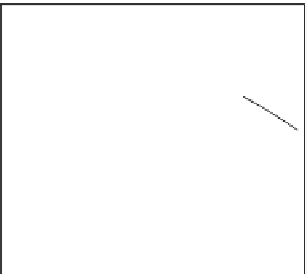Biomedical Engineering Reference
In-Depth Information
15
5.5
5
4.5
4
10
3.5
3
2.5
2
5
1.5
1
0.5
0
0
0
2
4
6
8
10
12
0
2
4
6
8
10
12
time (rescaled in days)
time (in rescaled days)
50
8000
45
7000
40
6000
35
30
5000
25
4000
20
3000
15
2000
10
5
1000
0
0
0
2
4
6
8
10
12
0
2000
4000
6000
8000
10000
time (in rescaled days)
carrying capacity of the vasculature, q
Fig. 3
Combination with radiotherapy: (
a
,
top left
) the unsaturated singular radiation dose rate
w
,(
b
,
top right
) the radiation dose rate
w
with upper limit
w
max
enforced, (
c
,
bottom left
)
corresponding singular anti-angiogenic agent
u
and (
d
,
bottom right
) corresponding trajectory
(
p
,
q
)
10
Suboptimal Protocols and Pharmacokinetic Equations
In all these optimal control problems, singular controls and their corresponding
trajectories are the most important feature that determine the structure of optimal
protocols. This is true both for the monotherapy case where a complete theoretical
solution for the optimal control problem has been given [
26
] and for combination
therapies where similar complete solutions are currently still elusive. But in these
cases, explicit formulas for the singular controls allow to utilize numerical proce-
dures to determine optimal solutions for given initial conditions and parameters.
However, singular controls are defined in terms of the variables
p
and
q
(and also
r
and
s
in the case of the radiation dose) and thus are not practically realizable.






















































































































































Search WWH ::

Custom Search